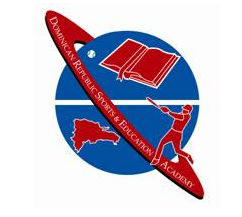DRSEA INFORMER
Volume VI, Issue 1: A Publication For Your Reading Enjoyment
The Dominican Republic Sports & Education Academy welcomed its inaugural students in January in the city that has produced many of the Dominican Republic’s most famous baseball stars.
“The dream has become reality,” said Harold Mendez, co-founder of the DRSEA, whose mission is to provide options and alternatives to just playing baseball by preparing young Dominican boys to position themselves to qualify for baseball scholarships at U.S. colleges and universities. “We want to improve lives through the DRSEA experience, and what those lives can ultimately do to improve their country,” Mendez added.
The DRSEA has 15 young men in its initial class of student athletes. Classes are being taught at The Palms School in San Pedro, and initially offer a concentration in English; baseball instruction is also provided. Allison Hale, director of the school and an Advisory Board member of the DRSEA, said the opportunity offered the first class of students will prove beneficial to them, regardless of success in baseball. “Education is something that will help them the rest of their lives,” she said.
Those educational benefits were underscored by Cesar Geronimo, a former Major League Baseball player with the Cincinnati Reds and a Dominican legend who serves on the Board of Trustees of the DRSEA. “Baseball is a great game,” he said, “and you should pursue it because it can be rewarding. But you should pursue education in the same way, because its rewards will continue to give.”
Baseball players who hail from San Pedro include Sammy Sosa, Alfonso Soriano, George Bell, Robinson Canó, Rico Carty, Joaquín Andújar, Mariano Duncan, Pedro Guerrero, and Rafael Ramírez, to name just a few.
Opening day of the DRSEA was a day I had been looking forward to for a long time, since 2005 when Harold and I first discussed the need for establishing the academy. And while we are starting on a small scale, it is a scale from which we hope to expand rapidly over the next few years.
I was, of course, excited about the opening, but my emotions caught up to me later as I sat at home, reflecting on the journey from dream to reality. I could not hold back the tears remembering the countless hours Harold and I spent planning the project. The need has been evident much longer, dating back to 2000 when I led a delegation at Major League Baseball’s behest to take a look at its teams’ academies in the Dominican Republic and finding so many of them lacking, particularly in educational opportunities. Some of the academies were fantastic and reminded me of some of the camps where I spent summers when I was young, but many – most – were decrepit beyond belief, including one that had a dormitory that looked more like a jail. After my report was filed, MLB opened an office in the Dominican Republic to oversee team operations in the country.
In 2004, I was part of a group that held a conference in the Dominican Republic on Latino participation in the sports industry. We invited prospects from MLB teams to sessions on financial planning, on picking a sports agent, on acculturation. I will never forget that the first question asked by one of these prospects was, “How do I open a bank account?”
I think it was that moment that convinced Harold and me that things needed to change. Here was an industry in one of the poorest countries in the world that puts over $125 million annually into the economy of the Dominican Republic to mine the country for baseball talent. Here is an industry where only two in 100 prospects succeeds. Here is an industry dependent on the talents of 16-year-olds, many who cannot point out on map where they live.
My emotions overwhelmed me as I thought of how far the DRSEA has come and how much further we have to go. I thought of those like Cesar Geronimo and baseball executive Lou Melendez who have supported the project from the beginning, as well as DRSEA Board members like Cecilia Mota, Joseph Brown, Laura Acosta, Sam Brooks, Keith Lee, Steve Lindemann, Peter Cohen, and Juan Matiz who joined the effort at early stages of the journey and have been unwavering, and the many who have joined the Board since, helping advance the cause.
I thought also of the naysayers, those who didn’t believe, who never thought the dream would become reality and declined to support our efforts either in deed or spirit. I am not mad at them; they only forced me to dig deeper into my reserve to succeed.
I also thought of those friends, family and associates who did support the DRSEA, either because they believed in the project or they believed in me, and I am eternally grateful for that support. I will be introducing the inaugural class in an upcoming issue of the DRSEA INFORMER.











